Dicyclohexylcarbodiimide
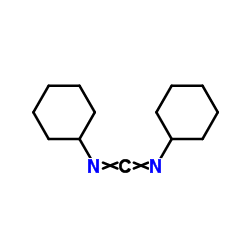
Dicyclohexylcarbodiimide structure
|
Common Name | Dicyclohexylcarbodiimide | ||
|---|---|---|---|---|
| CAS Number | 538-75-0 | Molecular Weight | 206.33 | |
| Density | 1.325 | Boiling Point | 122-124 ºC (6 torr) | |
| Molecular Formula | C13H22N2 | Melting Point | 34-35 °C(lit.) | |
| MSDS | Chinese USA | Flash Point | 87 ºC | |
| Symbol |



GHS05, GHS07, GHS08 |
Signal Word | Danger | |
Use of DicyclohexylcarbodiimideN,N-Dicyclohexylcarbodiimide(DCC) is a biochemical reagent that can be used as a biological material or organic compound for life science related research. |
| Name | 1,3-dicyclohexylcarbodiimide |
|---|---|
| Synonym | More Synonyms |
| Description | N,N-Dicyclohexylcarbodiimide(DCC) is a biochemical reagent that can be used as a biological material or organic compound for life science related research. |
|---|---|
| Related Catalog |
| Density | 1.325 |
|---|---|
| Boiling Point | 122-124 ºC (6 torr) |
| Melting Point | 34-35 °C(lit.) |
| Molecular Formula | C13H22N2 |
| Molecular Weight | 206.33 |
| Flash Point | 87 ºC |
| Exact Mass | 206.178299 |
| PSA | 24.72000 |
| LogP | 5.54 |
| Vapour Pressure | 0.0±0.5 mmHg at 25°C |
| Index of Refraction | 1.567 |
| Storage condition | Store at RT. |
| Stability | Stable, but moisture sensitive. Combustible. Incompatible with strong oxidizing agents. Avoid exposure to air or moisture. |
| Water Solubility | Reaction |
Synonym:DCC; N,N'-Methanetetraylbiscyclohexanamine Section 2 - COMPOSITION, INFORMATION ON INGREDIENTS
Risk Phrases: 22 24 41 43 Section 3 - HAZARDS IDENTIFICATION EMERGENCY OVERVIEW
Harmful if swallowed. Toxic in contact with skin. Risk of serious damage to eyes. May cause sensitization by skin contact.Moisture sensitive.The toxicological properties of this material have not been fully investigated. Potential Health Effects Eye: Causes severe eye irritation. Skin: Causes moderate skin irritation. Ingestion: The toxicological properties of this substance have not been fully investigated. Inhalation: The toxicological properties of this substance have not been fully investigated. Chronic: No information found. Section 4 - FIRST AID MEASURES Eyes: Immediately flush eyes with plenty of water for at least 15 minutes, occasionally lifting the upper and lower eyelids. Get medical aid immediately. Skin: Get medical aid immediately. Immediately flush skin with plenty of water for at least 15 minutes while removing contaminated clothing and shoes. Ingestion: If victim is conscious and alert, give 2-4 cupfuls of milk or water. Never give anything by mouth to an unconscious person. Get medical aid immediately. Inhalation: Remove from exposure and move to fresh air immediately. If not breathing, give artificial respiration. If breathing is difficult, give oxygen. Get medical aid. Notes to Physician: Section 5 - FIRE FIGHTING MEASURES General Information: As in any fire, wear a self-contained breathing apparatus in pressure-demand, MSHA/NIOSH (approved or equivalent), and full protective gear. During a fire, irritating and highly toxic gases may be generated by thermal decomposition or combustion. Extinguishing Media: Use water spray, dry chemical, carbon dioxide, or chemical foam. Section 6 - ACCIDENTAL RELEASE MEASURES General Information: Use proper personal protective equipment as indicated in Section 8. Spills/Leaks: Absorb spill with inert material (e.g. vermiculite, sand or earth), then place in suitable container. Clean up spills immediately, observing precautions in the Protective Equipment section. Avoid generating dusty conditions. Provide ventilation. Section 7 - HANDLING and STORAGE Handling: Wash thoroughly after handling. Remove contaminated clothing and wash before reuse. Use with adequate ventilation. Minimize dust generation and accumulation. Avoid contact with eyes, skin, and clothing. Keep container tightly closed. Avoid ingestion and inhalation. Storage: Store in a tightly closed container. Store in a cool, dry, well-ventilated area away from incompatible substances. Section 8 - EXPOSURE CONTROLS, PERSONAL PROTECTION Engineering Controls: Use adequate ventilation to keep airborne concentrations low. Exposure Limits CAS# 538-75-0: Personal Protective Equipment Eyes: Wear appropriate protective eyeglasses or chemical safety goggles as described by OSHA's eye and face protection regulations in 29 CFR 1910.133 or European Standard EN166. Skin: Wear appropriate protective gloves to prevent skin exposure. Clothing: Wear appropriate protective clothing to prevent skin exposure. Respirators: Follow the OSHA respirator regulations found in 29 CFR 1910.134 or European Standard EN 149. Use a NIOSH/MSHA or European Standard EN 149 approved respirator if exposure limits are exceeded or if irritation or other symptoms are experienced. Section 9 - PHYSICAL AND CHEMICAL PROPERTIES Physical State: Solid Color: white Odor: None reported. pH: Not available. Vapor Pressure: Not available. Viscosity: Not available. Boiling Point: 122-124 deg C Freezing/Melting Point: 34-35 deg C Autoignition Temperature: Not applicable. Flash Point: Not applicable. Explosion Limits, lower: Not available. Explosion Limits, upper: Not available. Decomposition Temperature: Not available. Solubility in water: Reacts with water. Specific Gravity/Density: Not available. Molecular Formula: C13H22N2 Molecular Weight: 206.1674 Section 10 - STABILITY AND REACTIVITY Chemical Stability: Stable under normal temperatures and pressures. Conditions to Avoid: Incompatible materials, ignition sources, exposure to moist air or water. Incompatibilities with Other Materials: Acids, strong oxidizing agents. Hazardous Decomposition Products: Nitrogen oxides, carbon monoxide, carbon dioxide. Hazardous Polymerization: Has not been reported. Section 11 - TOXICOLOGICAL INFORMATION RTECS#: CAS# 538-75-0: FF2160000 LD50/LC50: CAS# 538-75-0: Dermal, guinea pig: LD50 = 10 mL/kg; Inhalation, rat: LC50 = 159 mg/m3/6H; Oral, mouse: LD50 = >800 mg/kg; Oral, rat: LD50 = 400 mg/kg. Rat: LC50 = 0.159-0.417 Carcinogenicity: Dicyclohexylcarbodiimide - Not listed by ACGIH, IARC, or NTP. Other: See actual entry in RTECS for complete information. Section 12 - ECOLOGICAL INFORMATION Section 13 - DISPOSAL CONSIDERATIONS Products which are considered hazardous for supply are classified as Special Waste and the disposal of such chemicals is covered by regulations which may vary according to location. Contact a specialist disposal company or the local waste regulator for advice. Empty containers must be decontaminated before returning for recycling. Section 14 - TRANSPORT INFORMATION IATA No information available. IMO No information available. RID/ADR No information available. Section 15 - REGULATORY INFORMATION European/International Regulations European Labeling in Accordance with EC Directives Hazard Symbols: T Risk Phrases: R 22 Harmful if swallowed. R 24 Toxic in contact with skin. R 41 Risk of serious damage to eyes. R 43 May cause sensitization by skin contact. Safety Phrases: S 26 In case of contact with eyes, rinse immediately with plenty of water and seek medical advice. S 28 After contact with skin, wash immediately with... WGK (Water Danger/Protection) CAS# 538-75-0: 2 Canada CAS# 538-75-0 is listed on Canada's DSL List. CAS# 538-75-0 is not listed on Canada's Ingredient Disclosure List. US FEDERAL TSCA CAS# 538-75-0 is listed on the TSCA inventory. SECTION 16 - ADDITIONAL INFORMATION N/A |
| Symbol |



GHS05, GHS07, GHS08 |
|---|---|
| Signal Word | Danger |
| Hazard Statements | H302 + H312-H315-H317-H318-H335-H336-H351-H373 |
| Precautionary Statements | P260-P280-P301 + P312 + P330-P305 + P351 + P338 + P310 |
| Personal Protective Equipment | Faceshields;full-face respirator (US);Gloves;Goggles;multi-purpose combination respirator cartridge (US);type ABEK (EN14387) respirator filter |
| Hazard Codes | Xn:Harmful; |
| Risk Phrases | R21;R36/38;R41;R43 |
| Safety Phrases | S26-S36/37/39-S45-S41-S24-S37/39-S24/25-S36-S16-S53 |
| RIDADR | UN 2922 8/PG 2 |
| WGK Germany | 3 |
| RTECS | FF2160000 |
| Packaging Group | II |
| Hazard Class | 6.1 |
| HS Code | 29252000 |
| Precursor 10 | |
|---|---|
| DownStream 10 | |
| HS Code | 2921300090 |
|---|---|
| Summary | 2921300090 other cyclanic, cyclenic or cyclotherpenic mono- or polyamines, and their derivatives; salts thereof。Supervision conditions:None。VAT:17.0%。Tax rebate rate:9.0%。MFN tariff:6.5%。General tariff:30.0% |
|
Amelioration of radiation-induced oral cavity mucositis and distant bone marrow suppression in fanconi anemia Fancd2-/- (FVB/N) mice by intraoral GS-nitroxide JP4-039.
Radiat. Res. 182(1) , 35-49, (2014) The altered DNA damage response pathway in patients with Fanconi anemia (FA) may increase the toxicity of clinical radiotherapy. We quantitated oral cavity mucositis in irradiated Fanconi anemia Fancd... |
|
|
Mediated Electron Transfer at Vertically Aligned Single-Walled Carbon Nanotube Electrodes During Detection of DNA Hybridization.
Nanoscale Res. Lett. 10 , 978, (2015) Vertically aligned single-walled carbon nanotube (VASWCNT) assemblies are generated on cysteamine and 2-mercaptoethanol (2-ME)-functionalized gold surfaces through amide bond formation between carboxy... |
|
|
Controlled Endolysosomal Release of Agents by pH-responsive Polymer Blend Particles.
Pharm. Res. 32 , 2280-91, (2015) A key step of delivering extracellular agents to its intracellular target is to escape from endosomal/lysosomal compartments, while minimizing the release of digestive enzymes that may compromise cell... |
| Cyclohexanamine, N-(cyclohexylcarbonimidoyl)- |
| N,N'-Methanetetraylbiscyclohexanamine |
| EINECS 208-704-1 |
| N,N‘-Dicyclohexylcarbodimide |
| Methanediimine, N,N'-dicyclohexyl- |
| dicyclohexylcarbodiimide |
| dicyclohexyl-carbodiimide |
| Dicyclimide |
| 1,3-di-cyclohexylcarbodiimide |
| N,N'-Dicyclohexylcarbodiimide |
| bis-cyclohexylcarbodiimide |
| Carbodicyclohexylimide |
| N,N'-Dicyclohexylcarbodimide |
| dcc solution |
| DCC |
| N,N′-Dicyclohexylcarbodiimide |
| Cyclohexanamine, N,N'-methanetetraylbis- |
| DCC/DCCI |
| Carbodiimide, dicyclohexyl- |
| N,N’-Dicyclohexylcarbodiimide (DCC) |
| MFCD00011659 |
| N-(N-cyclohexylcarboximidoyl)cyclohexanamine |
| DCCI |
| N,N'-Methanediylidenedicyclohexanamine |
| N,N‘-Dicyclohexylcarbodiimide |
| 1,3-dicyclohexylcarbodiimide |
| DCCD |
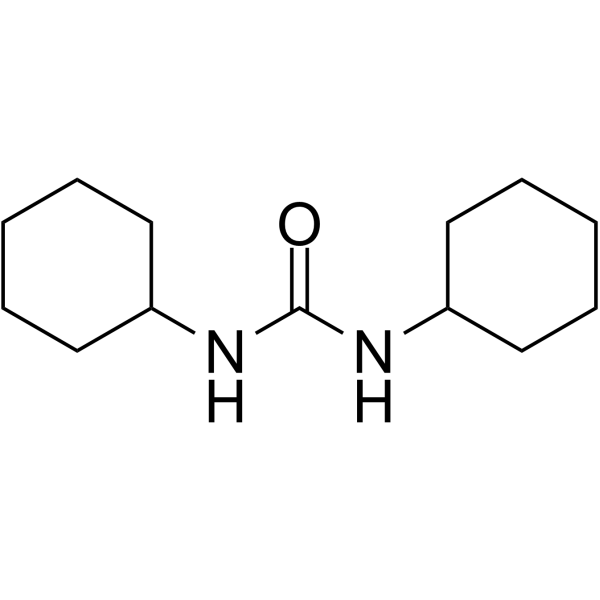 CAS#:2387-23-7
CAS#:2387-23-7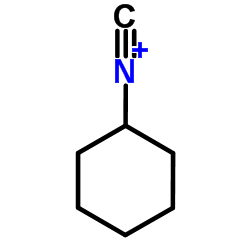 CAS#:931-53-3
CAS#:931-53-3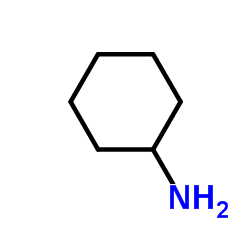 CAS#:108-91-8
CAS#:108-91-8 CAS#:1212-29-9
CAS#:1212-29-9 CAS#:3173-53-3
CAS#:3173-53-3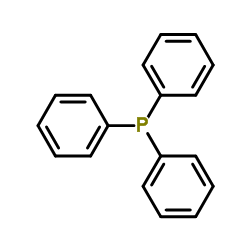 CAS#:603-35-0
CAS#:603-35-0 CAS#:34656-93-4
CAS#:34656-93-4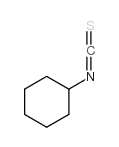 CAS#:1122-82-3
CAS#:1122-82-3 CAS#:24901-29-9
CAS#:24901-29-9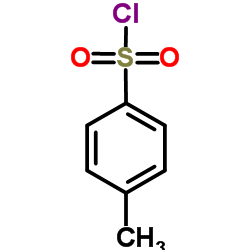 CAS#:98-59-9
CAS#:98-59-9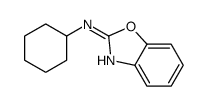 CAS#:10450-11-0
CAS#:10450-11-0 CAS#:2719-26-8
CAS#:2719-26-8 CAS#:106694-64-8
CAS#:106694-64-8 CAS#:55750-62-4
CAS#:55750-62-4 CAS#:57-13-6
CAS#:57-13-6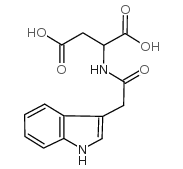 CAS#:32449-99-3
CAS#:32449-99-3 CAS#:35824-91-0
CAS#:35824-91-0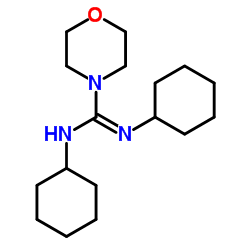 CAS#:4975-73-9
CAS#:4975-73-9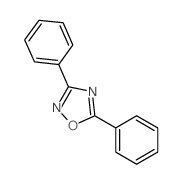 CAS#:888-71-1
CAS#:888-71-1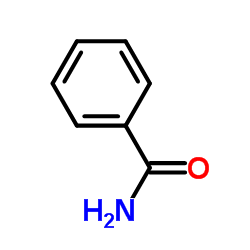 CAS#:55-21-0
CAS#:55-21-0
